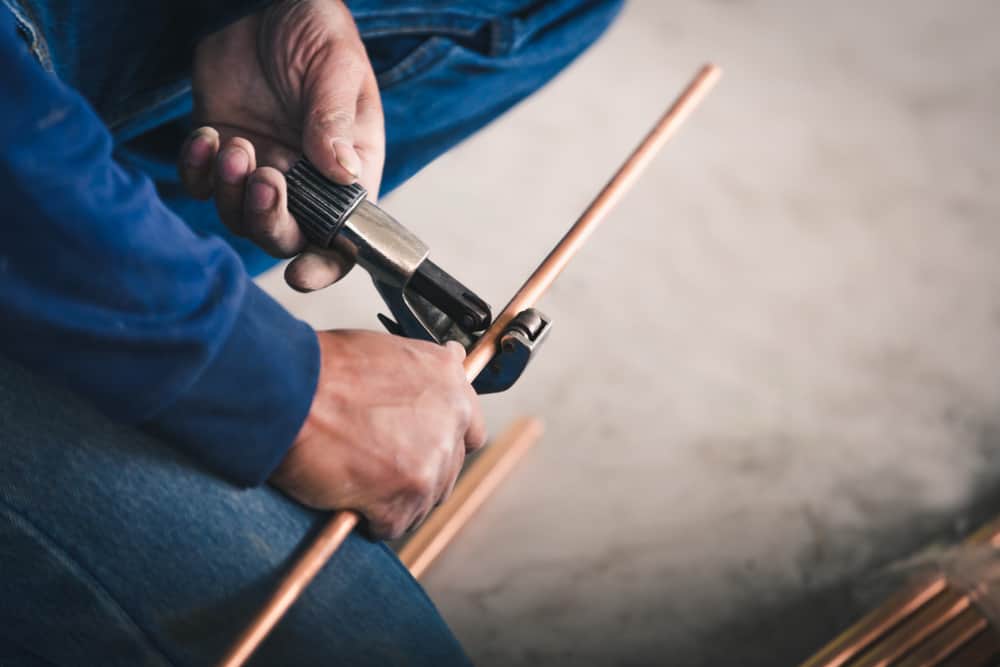What is the best method for cutting copper pipe?
Copper pipe is a common plumbing material known for its durability, corrosion resistance, and excellent heat conductivity. Whether you’re a DIY enthusiast or a professional plumber, knowing the best methods for cutting copper pipe is essential for successful installations and repairs. In this comprehensive guide, we’ll explore various methods and offer tips on choosing the right one for your project.

1. Hacksaw
One traditional method used for cutting copper tubing is utilizing a hacksaw. This manually operated instrument is both readily available and budget-friendly, rendering it a favored option for numerous DIY enthusiasts. To execute a copper pipe cut using a hacksaw, adhere to the following guidelines:

– Measure and mark the desired length on the pipe.
– Secure the pipe in a vise or use a pipe cutter to stabilize it.
– Align the hacksaw blade with the mark.
– Apply light pressure and start sawing with long, even strokes.
– Keep the blade perpendicular to the pipe to ensure a straight cut.
– After the cut is complete, deburr the edges with a file or sandpaper.
2. Tubing Cutter
A tubing cutter is a specialized tool designed for cutting copper and other metal pipes. It provides precise, clean cuts with minimal effort. Here’s how to use a tubing cutter:

– Place the tubing cutter on the pipe at the desired length.
– Tighten the cutter’s wheel against the pipe’s surface.
– Rotate the cutter around the pipe while periodically tightening the wheel.
– Continue rotating until the pipe is severed.
– Deburr the edges as needed.
Tubing cutters are a top choice for professionals and DIYers who prioritize accuracy and clean cuts. They come in various sizes to accommodate different pipe diameters.
3. Pipe Cutter
Pipe cutters are another efficient tool for cutting copper pipes. They come in various styles, including ratcheting and manual models. To use a pipe cutter:

– Position the cutter on the pipe at the intended length.
– Tighten the cutter’s blade onto the pipe.
– Rotate the cutter around the pipe, periodically tightening the blade.
– Keep rotating until the pipe is cut through.
– Deburr the cut edges as necessary.
4. Reciprocating Saw
For cutting copper pipes quickly and efficiently, a reciprocating saw can be a handy tool. This power tool is especially useful for larger pipes or in tight spaces. Follow these steps:

– Secure the copper pipe using a vise or pipe cutter.
– Choose a fine-toothed metal-cutting blade for your reciprocating saw.
– Position the saw blade at the cutting mark on the pipe.
– Start the saw and slowly cut through the pipe while maintaining a straight line.
– After the cut, deburr the edges for a clean finish.
5. Angle Grinder
An angle grinder equipped with a cutting wheel is a powerful tool for cutting copper pipes. It is particularly useful for thick-walled pipes and situations where other methods may be less practical. Here’s how to use an angle grinder for cutting copper pipes:

– Secure the pipe firmly in a vise or using a pipe cutter.
– Attach a cutting wheel to the angle grinder.
– Position the wheel at the desired cutting mark on the pipe.
– Turn on the grinder and carefully cut through the pipe.
– Ensure a straight and clean cut.
– Deburr the cut edges with a file or sandpaper.
6. Pro Tips for Cutting Copper Pipe

– Safety First: Always wear appropriate safety gear, including safety glasses and gloves, when working with any cutting method.
– Measure Twice, Cut Once: Accurate measurements are essential to prevent wastage and ensure a proper fit for your pipes.
– Deburring: After each cut, use a deburring tool, file, or sandpaper to remove any sharp edges and burrs. Smooth edges make for easier connections and reduce the risk of leaks.
– Choosing the Right Tool: The best method for cutting copper pipe depends on the pipe’s diameter, location, and your skill level. Consider the specific needs of your project when choosing a cutting tool.
– Practice Makes Perfect: If you’re new to cutting copper pipe, practice on scrap pieces to gain confidence and improve your technique.
Conclusion
Cutting copper pipe is a fundamental skill for plumbing and various DIY projects. The method you choose should align with the project’s requirements, your skill level, and the available tools. Whether you opt for a hacksaw, tubing cutter, pipe cutter, reciprocating saw, or angle grinder, always prioritize safety, accuracy, and clean finishes. With the right technique and tools, you’ll be well-prepared to tackle any copper pipe cutting task that comes your way.
READ MORE: WHAT IS BUTTON HEAD SCREWS , AND PROPERTIES , APPLICATIONS
READ MORE: How to start a new startup business on Deepawali 2023




